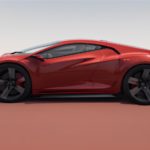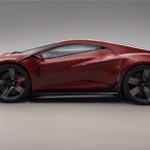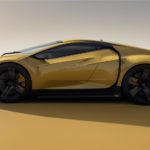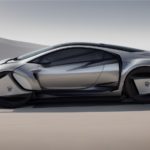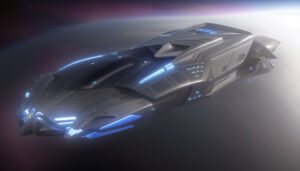Business Case: Launching a Zero-Emission 2-Seat Sports Car Racing Series
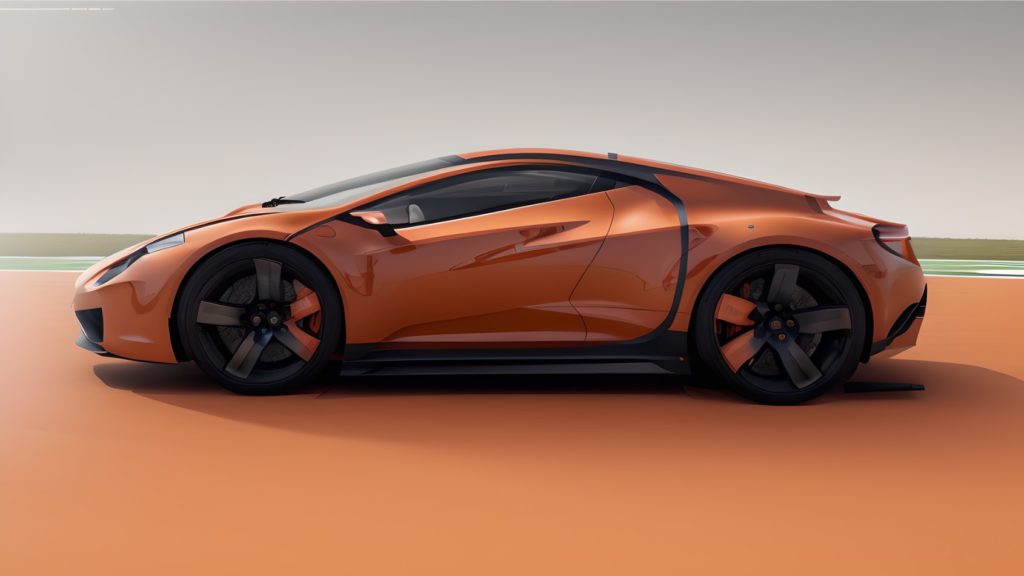

Executive Summary:
This business case proposes the establishment of a small-scale, innovative 2-seat sports car racing series featuring zero-emission vehicles. The series will provide a platform for teams to compete with identical exterior bodywork while experimenting with various zero-emission power units. This concept aligns with the growing global interest in sustainable transportation and racing, offering a unique and engaging experience for motorsport enthusiasts while promoting eco-friendly technologies.
1. Introduction:
Motorsports have traditionally revolved around high-performance vehicles with internal combustion engines. However, with the global shift towards sustainability and eco-consciousness, there’s an emerging opportunity for zero-emission racing series. This business case explores the creation of a 2-seat sports car racing series that embraces this transition by allowing teams to innovate with zero-emission power units while maintaining uniform exterior bodywork.

2. Objectives:
- To promote and accelerate the development and adoption of zero-emission technologies in the automotive industry.
- To offer an exciting, competitive, and eco-friendly racing experience for motorsport enthusiasts.
- To provide a platform for automotive manufacturers, startups, and technology companies to showcase their zero-emission innovations.
- To attract sponsors, broadcasters, and a global fanbase, contributing to the economic viability of the racing series.
3. Market Analysis:
a. Growing Demand for Sustainability:
- Consumers increasingly prefer eco-friendly transportation options.
- Governments worldwide are implementing stricter emissions regulations and incentivizing electric vehicles (EVs).
b. Potential for Zero-Emission Motorsports:
- Formula E, a single-seater electric racing series, has demonstrated the market’s appetite for eco-friendly motorsports.
- Niche racing series, such as the Zero Emission GT Championship, have successfully introduced zero-emission vehicles.
c. Evolving Automotive Landscape:
- Established automakers and startups are investing heavily in zero-emission vehicle technologies.
- A zero-emission racing series can serve as a dynamic testing ground for new technologies.
4. Concept Details:

a. Vehicle Specifications:
- 2-seat sports car chassis with identical exterior bodywork for all teams.
- Zero-emission power units, including electric, hydrogen fuel cell, and alternative zero-emission technologies.
- Lightweight construction for enhanced energy efficiency and speed.
b. Race Format:
- Multiple race events at renowned racetracks worldwide.
- Points-based championship with season standings.
- Innovation-focused awards for the most energy-efficient and innovative power units.
c. Technical Regulations:
- Strict technical regulations to ensure safety, fairness, and competitiveness.
- Emphasis on energy management and efficiency to encourage innovation.
- Periodic rule reviews to stay aligned with technological advancements.
5. Revenue Generation:
a. Sponsorship and Advertising:
- Attract global sponsors seeking to align with eco-friendly initiatives.
- Engage with environmentally conscious brands for advertising partnerships.
b. Ticket Sales and Fan Engagement:
- Generate revenue from ticket sales for race events.
- Leverage fan engagement through merchandise sales, fan zones, and interactive experiences.
c. Broadcasting Rights:
- Secure broadcasting deals with global sports networks to reach a wider audience.
- Streaming partnerships to cater to digital audiences.
d. Technology Showcases:
- Attract automotive manufacturers and technology companies willing to showcase their innovations on a competitive stage.
6. Sustainability and Corporate Social Responsibility:
The racing series will actively contribute to global sustainability goals by promoting zero-emission technologies. The reduction in carbon emissions through the adoption of eco-friendly vehicles will be a central part of the series’ identity.
7. Challenges and Risks:
- Initial investment for infrastructure, including charging or refueling stations for zero-emission vehicles.
- Ensuring safety and adherence to regulations in a rapidly evolving technological landscape.
- Building a fanbase and attracting sponsors in a relatively new racing category.

Let’s delve into a more detailed elaboration of the business case for a zero-emission 2-seat sports car racing series with identical exterior bodywork and room for experimentation with power units.
2. Objectives:
- Accelerating Zero-Emission Technology: As governments and consumers prioritize sustainability, automakers are investing heavily in zero-emission vehicle technologies. This racing series aims to accelerate the development and adoption of these technologies by providing a high-profile platform for innovation.
- Engaging Motorsport Enthusiasts: Motorsport has a dedicated global fanbase. By offering an eco-friendly racing experience, this series aims to engage both existing motorsport enthusiasts and individuals who are passionate about sustainability.
- Showcasing Innovations: The series will serve as a showcase for automotive manufacturers, startups, and technology companies to demonstrate their cutting-edge zero-emission technologies, fostering competition and innovation.
- Attracting Sponsors and Viewers: Sustainability is a key focus for many brands. By aligning with eco-friendly initiatives, this racing series can attract sponsors looking to promote their commitment to sustainability. Broadcasters will also be interested in reaching a broader audience interested in green technologies.
3. Market Analysis:
a. Growing Demand for Sustainability:
- Consumers increasingly seek environmentally friendly products, including electric and zero-emission vehicles. This aligns with the racing series’ focus on eco-friendly technology.
b. Potential for Zero-Emission Motorsports:
- Formula E, a single-seater electric racing series, has demonstrated the market’s appetite for eco-friendly motorsports. This racing series can cater to those who prefer sports cars and 2-seater racing.
c. Evolving Automotive Landscape:
- Established automakers like Tesla, BMW, and Porsche are investing heavily in electric vehicles, while startups like Rivian and Lucid are gaining traction.
- A zero-emission racing series serves as a dynamic testing ground for these technologies.

4. Concept Details:
a. Vehicle Specifications:
- The racing series features 2-seat sports car chassis with uniform exterior bodywork to emphasize the focus on technology innovation.
- Teams have the freedom to experiment with various zero-emission power units, including battery electric, hydrogen fuel cell, and other innovative technologies.
b. Race Format:
- Multiple race events are held at renowned racetracks worldwide.
- Potential for universities to show off their students’ talents.
- Potentially a nations cup racing format to show off the engineering qualities of the various countries.
- The championship operates on a points-based system, with season standings and awards for energy efficiency and innovation.
c. Technical Regulations:
- The series establishes strict technical regulations to ensure safety, fairness, and competitiveness.
- Emphasis is placed on energy management and efficiency to encourage innovation and eco-friendliness.
5. Revenue Generation:
a. Sponsorship and Advertising:
- The series attracts global sponsors and environmentally conscious brands eager to align with sustainability initiatives.
- Advertising partnerships leverage the series’ eco-friendly identity.
b. Ticket Sales and Fan Engagement:
- Revenue is generated through ticket sales for race events, with added income from merchandise sales, fan zones, and interactive experiences.
c. Broadcasting Rights:
- The series secures broadcasting deals with global sports networks to reach a broader audience.
- Streaming partnerships cater to the growing digital audience.
d. Technology Showcases:
- Automotive manufacturers and technology companies keen to demonstrate their zero-emission innovations on a competitive stage contribute to the series’ funding.

6. Sustainability and Corporate Social Responsibility:
The racing series actively contributes to global sustainability goals by promoting zero-emission technologies. This initiative is a significant part of the series’ identity and aligns with corporate social responsibility efforts.
7. Challenges and Risks:
- Initial Investment: Establishing the necessary infrastructure, including charging or refueling stations for zero-emission vehicles, requires an initial investment. However, this investment can be mitigated through sponsorships and partnerships with charging network providers.
- Regulatory Changes: The rapidly evolving technological landscape and changing regulations may pose challenges. However, the series plans to stay adaptable by periodically reviewing and adjusting its rules to align with advancements in zero-emission technology.
- Fanbase and Sponsorship: Attracting a dedicated fanbase and securing sponsorships in a relatively new racing category might be challenging initially. However, the alignment with sustainability and the existing motorsport audience should help overcome these challenges.
8. Conclusion:
The proposed zero-emission 2-seat sports car racing series is poised to tap into the growing interest in sustainable transportation and motorsports. By allowing teams to experiment with zero-emission power units while maintaining identical exteriors, this series promotes innovation, encourages environmental consciousness, and offers an engaging platform for automotive manufacturers and technology companies to showcase their advancements. With the increasing global focus on sustainability, this concept has the potential to attract a passionate fanbase, forward-thinking sponsors, and usher in a new era of eco-friendly racing.

All images are created using VizCom.AI based on a 2002 ballpoint pen doodle.










